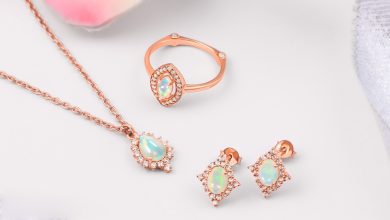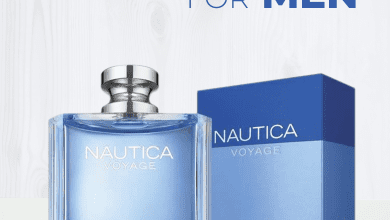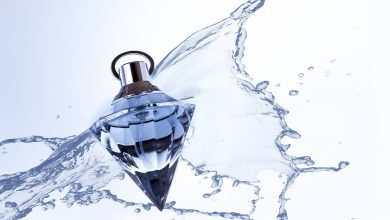Tips for Restoring Health to Heat Damaged Natural Hair

If you frequently use hot tools to style your hair, you might notice that your hair starts to look and feel dry, brittle, and prone to breakage. Heat styling can cause significant damage to your natural hair, but the good news is that it is not irreversible. By taking some extra care, using a heat protectant spray and following a few hair care tips, you can help your hair recover from heat damage and restore its health and shine.
Table of Contents
- Introduction
- What is heat damage?
- Signs of heat damage on natural hair
- How to prevent heat damage on natural hair
- Hair care tips to recover from heat damage on natural hair
- Deep conditioning treatments
- Protein treatments
- Moisturizing your hair
- Using heat protectant products
- Avoiding heat styling
- Trimming split ends
- Protective hairstyles
- Sleeping with a satin bonnet or pillowcase
- Avoiding chemical treatments
- Frequently Asked Questions
- Conclusion
Introduction
Heat styling is a convenient and efficient way to achieve a desired hairstyle, but it can take a toll on your natural hair’s health. Excessive heat can cause your hair to become dry, brittle, and prone to breakage, making it difficult to maintain its length and volume. However, with the right hair care routine, you can help your hair recover from heat damage and regain its shine and strength.
What is heat damage?
Heat damage refers to the damage that heat styling tools can cause to your hair. When you use hot tools such as flat irons, curling irons, or blow dryers, the high temperature can break down the natural proteins in your hair, causing it to become weak and brittle. This can lead to split ends, breakage, and overall hair damage.
Heat damage to hair occurs when the hair is exposed to excessive heat from styling tools such as flat irons, curling irons, and hair dryers. This excessive heat can cause the hair to become dry, brittle, and prone to breakage, resulting in split ends, frizz, and reduced elasticity.
It can occur when the temperature of styling tools exceeds the hair’s natural temperature tolerance, which is around 450°F (232°C) for most hair types. When hair is exposed to temperatures above this level, the protective cuticle layer can become damaged, resulting in irreversible harm to the hair.
The severity of the damage depends on a number of factors, including the hair’s natural texture, the frequency and duration of heat exposure, and the heat protection products used during styling. It’s important to use heat protection products before using any styling tool and to avoid excessive heat exposure to prevent heat damage and keep your hair healthy and strong.
Signs of heat damage on natural hair
Some common signs of heat damage on natural hair include:
- Split ends
- Breakage
- Dryness
- Brittle hair
- Lack of elasticity
- Rough texture
- Hair that does not curl or hold a curl
- Reduced volume
If you notice any of these signs, it’s likely that your hair has suffered from heat-damage and needs some extra care to recover.
How to prevent heat damage on natural hair
Preventing heat damage is the best way to keep your natural hair healthy and avoid the need for recovery treatments. Some tips for preventing heat damage include:
- Limiting heat styling to once or twice a week
- Using the lowest heat setting possible
- Using a heat protectant product before heat styling
- Air-drying your hair whenever possible
- Using a diffuser on your blow dryer to minimize heat exposure
- Avoiding tight hairstyles that can cause tension on your hair
Hair care tips to recover from heat damage on natural hair
If you’ve already experienced heat damage on your natural hair, don’t worry. You can help your hair recover by following these hair care tips:
Deep conditioning treatments
Deep conditioning treatments are a great way to nourish and repair your hair. Look for a deep conditioner that contains ingredients such as keratin, collagen, or biotin, which can help strengthen your hair and improve its elasticity. Apply the deep conditioner to your hair, cover it with a shower cap, and leave it on for at least 30 minutes before rinsing it out.
Protein treatments
Protein treatments are another great way to restore your hair’s strength and prevent further breakage. Look for a protein treatment that contains ingredients such as hydrolyzed wheat protein or hydrolyzed keratin, which can help repair damaged hair. Apply the protein treatment to your hair, cover it with a shower cap, and leave it
Moisturizing your hair
Heat styling can strip your hair of its natural moisture, leaving it dry and brittle. To help your hair recover, it’s important to keep it moisturized. Look for a moisturizing shampoo and conditioner that contains ingredients such as coconut oil, shea butter, or argan oil. You can also use a leave-in conditioner or hair oil to provide extra moisture to your hair.
Using heat protectant products
One of the best ways to prevent the damage is to use a heat protectant product before heat styling. Heat protectant products can help shield your hair from the high temperature of hot tools and prevent further damage. Look for a heat protectant spray or cream that contains ingredients such as silicone or dimethicone.
Avoiding heat styling
If possible, it’s best to avoid heat styling altogether while your hair recovers from the damage. Try wearing your hair in natural styles such as twists, braids, or buns that don’t require heat styling. If you do need to use hot tools, limit their use to once or twice a week and use the lowest heat setting possible.
Trimming split ends
Split ends are a common sign of heat damage and can make your hair look dull and lifeless. To help your hair recover, it’s important to trim split ends regularly. This will prevent further damage from traveling up the hair shaft and help your hair look healthier overall.
Protective hairstyles
Protective hairstyles such as braids, twists, or weaves can help protect your hair from further damage and promote healthy growth. These hairstyles keep your hair protected from environmental factors such as wind, sun, and pollution, which can cause additional damage.
Sleeping with a satin bonnet or pillowcase
Cotton pillowcases can cause friction on your hair, leading to breakage and damage. To protect your hair while you sleep, consider using a satin or silk bonnet or pillowcase. These materials create less friction and help keep your hair moisturized.
Avoiding chemical treatments
Chemical treatments such as relaxers or color treatments can cause significant damage to your hair, especially if your hair is already damaged. To help your hair recover, it’s best to avoid chemical treatments altogether or wait until your hair is fully recovered before attempting any chemical treatments.
Frequently Asked Questions
1. Can heat damaged hair be repaired?
Yes, heat damaged hair can be repaired with the right hair care routine, including deep conditioning treatments, protein treatments, and limiting heat styling.
2. How often should I deep condition my hair if it’s heat damaged?
If your hair is heat damaged, it’s recommended to deep condition your hair once a week to help nourish and repair your hair.
3. Can I still use hot tools on my hair if it’s heat damaged?
If your hair is heat damaged, it’s best to avoid hot tools altogether or limit their use to once or twice a week. If you do use hot tools, use the lowest heat setting possible and use a heat protectant product.
4. How can I prevent heat damage on my natural hair?
To prevent the damage, limit heat styling to once or twice a week, use a heat protectant product, and air-dry your hair whenever possible.
5. How long does it take for hair to recover from heat damage?
The amount of time it takes for hair to recover from heat damage varies depending on the severity of the damage. It can take anywhere from a few weeks to several months for hair to fully recover.
Conclusion
Heat styling can cause significant damage to your natural hair, but with the right hair care routine, you can help your hair recover and restore its health and shine. Remember to deep condition your hair, use protein treatments, trim split ends regularly, and limit heat styling. Protective hairstyles, satin bonnets or pillowcases, and avoiding chemical treatments can also help your hair recover from damage. With patience and consistency, you can help your hair regain its natural beauty and health.





